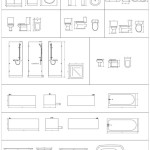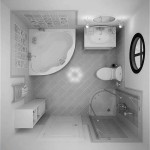Essential Aspects of Installing Bathroom Sink Water Lines
Installing bathroom sink water lines is a crucial plumbing task that ensures a functional and safe water supply to the sink. Understanding the essential aspects of this process is vital for both homeowners and professionals to ensure proper installation and prevent costly mistakes.
This article will delve into the key aspects of installing bathroom sink water lines, including:
- Choosing the right materials
- Proper pipe sizing
- Making secure connections
- Testing for leaks
By following these essential aspects, you can ensure a successful bathroom sink water line installation that provides reliable and safe water flow.
Choosing the Right Materials
Selecting the appropriate materials for your bathroom sink water lines is critical. The type of pipe material used will impact its durability, longevity, and ability to withstand water pressure and temperature changes. Common materials used include:
- Copper
- PEX (cross-linked polyethylene)
- CPVC (chlorinated polyvinyl chloride)
Each material has its advantages and disadvantages, so carefully consider the specific requirements of your installation before making a decision.
Proper Pipe Sizing
The size of the water lines used is crucial for ensuring adequate water flow to the sink. Undersized pipes can restrict water flow, while oversized pipes can be more expensive and difficult to work with. The diameter of the supply lines should generally match the diameter of the inlet connections on the faucet.
Making Secure Connections
Properly connecting the water lines to the faucet and supply valves is essential to prevent leaks. Use appropriate fittings, gaskets, and thread sealant to ensure a tight seal. Remember to hand-tighten all connections first, then use a wrench to further tighten them, but avoid overtightening.
Testing for Leaks
Once the water lines are installed, it is crucial to test them for leaks. Turn on the water supply and inspect all connections for any visible leaks. If any leaks are обнаруżony, tighten the connections accordingly or replace the faulty components. It is also advisable to run water through the sink for several minutes to ensure proper flow and check for any potential issues.
By following these essential aspects, you can ensure a successful bathroom sink water line installation that provides reliable and safe water flow. Remember that if you are not confident to perform the installation yourself, it is always advisable to seek the advice and assistance of a qualified plumber.

Replace Bathroom Sink Water Supply Lines

How To Replace And Install A Bathroom Sink

How To Install A Vessel Sink Faucet

How To Replace And Install A Bathroom Sink

Here S How Install A Bathroom Pedestal Sink

How To Replace A Water Supply Line Replacing Faucet Toilet Lines

Water Supply Lines For Bathroom Sink Http Www Designbabylon Interiors Com Bathro Shower Plumbing Diagram

What Is The Bathroom Sink Plumbing Rough In Heights

Installing The Plumbing For A Bathroom Sink Drain Stopper Replacing And Repair Pex Water Lines Install Toilet Sinks Pipe Stock Photo Adobe

What Size Are Faucet Supply Lines For All Faucets Tck
Related Posts







